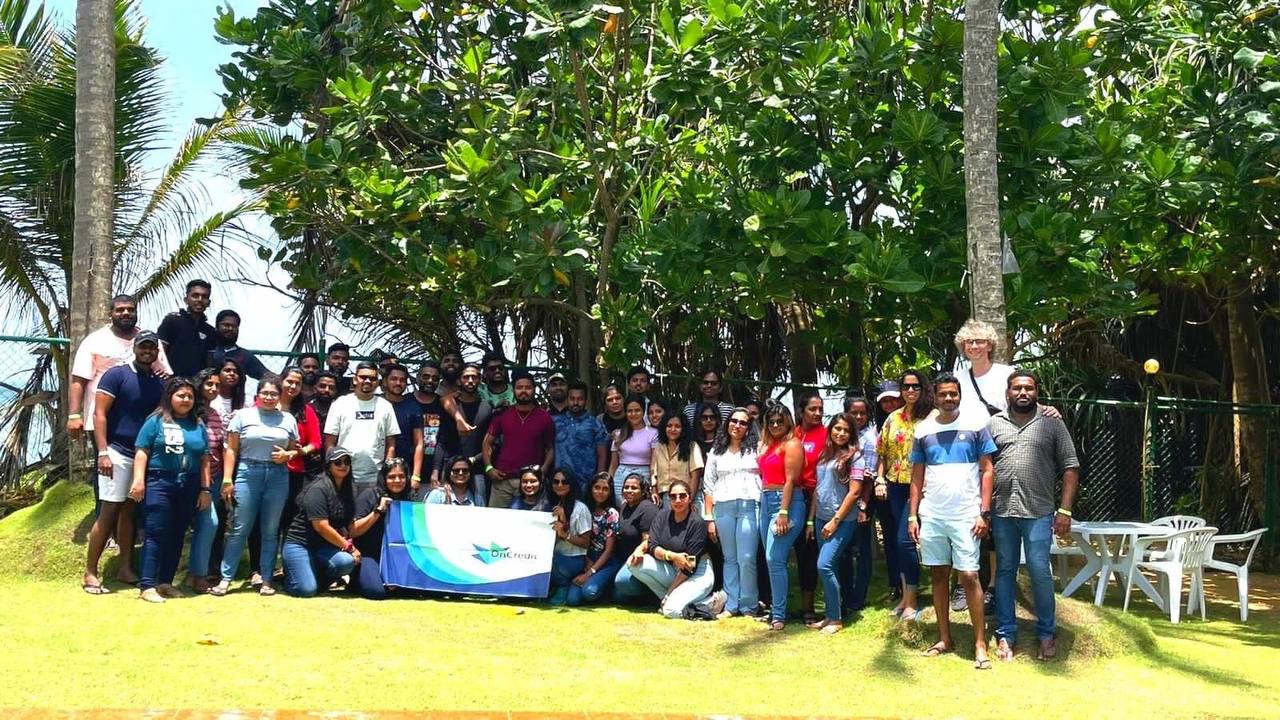Sri Lanka's Digital Lending Landscape: A Closer Look

We are on the verge of an exciting update in our platform. While not yet launched, we are preparing to introduce On Credit, a new loan originator from Sri Lanka, in the near future. Anticipating this addition, we engaged in a revealing conversation with Supun Sudarshana, CEO of On Credit LK. This discussion provides valuable insights into Sri Lanka's P2P lending market, highlighting its growth trajectory, the challenges it faces, and the opportunities it holds.
Hi Supun! Could you provide an overview of the current state of the digital lending market in Sri Lanka? How has it evolved over the past few years?
The digital lending market in Sri Lanka is still in its early stages but has shown significant growth over the past few years.
In Sri Lanka, digital lending started gaining grip around 2016 when the first platforms were established. Initially, the market faced some challenges, including regulatory uncertainties and low awareness among potential borrowers and lenders.
The Central Bank of Sri Lanka recognized online lending platforms as a new category of financial institutions in 2018, providing a regulatory framework for their operations. This move helped to build trust among borrowers and lenders and fostered the growth of the market.
Over the years, digital lending platforms in Sri Lanka have diversified their offerings to cater to various types of borrowers, including individuals and small businesses. They have also expanded their services to include different types of loans, such as personal loans, business loans, and education loans.
The growth of the online lending market has been driven by several factors. Firstly, it offers an alternative source of financing.

What are the key regulatory challenges facing digital lending in Sri Lanka, and how is your association working to address them?
In Sri Lanka, the key regulatory challenges facing digital lending include addressing potential risks, and maintaining the stability of the financial system. The regulatory framework for lending is still evolving, and there are ongoing discussions and efforts to address these challenges.
To effectively address the unique challenges in our industry, we established the Digital Alternative Lending Association. This initiative fosters collaboration among key players in the industry, including online lending platforms, regulators, and policymakers. Our primary goal is to create a regulatory environment that not only fuels innovation but also prioritizes and protects the interests of both borrowers and lenders. Through this unified approach, we aim to cultivate a more balanced and progressive digital lending landscape.
The association engages in policy advocacy and provides recommendations to regulators on matters related to lending. We emphasize the importance of establishing robust risk management practices, implementing adequate disclosure requirements, and ensuring fair treatment of borrowers and lenders.
We also encourage adopting industry best practices and standards by digital lending platforms.
How has the recent economic situation in Sri Lanka impacted the digital lending industry, particularly in terms of loan performance and investor confidence?
The Sri Lankan economy is currently demonstrating promising signs of recovery after facing challenges over the past couple of years due to the impact of the COVID-19 pandemic, the Easter attacks, and internal upheavals. Under the leadership of the new President, substantial efforts have been initiated towards restructuring the country's debt, resulting in a successful agreement with the International Monetary Fund (IMF). This has notably stabilized the economic situation, leading to an increase in the country's reserves.
Importantly, there are presently no restrictions on outward remittances, offering foreign investors the assurance and freedom to invest in Sri Lanka. This newfound stability and openness in financial transactions create an environment conducive to attracting foreign investments.
In this context, digital lending platforms, armed with robust risk management strategies and transparent communication practices, can significantly contribute to maintaining this stability and rebuilding investor confidence. By adhering to stringent risk assessment measures and ensuring clear and open communication channels, these platforms can play a pivotal role in supporting the country's economic growth trajectory.
The combination of a stable economic landscape, increased reserves, and the removal of restrictions on outbound money transfers presents a unique opportunity for foreign investors. However, it's crucial for online lending platforms to prioritize risk management and transparent communication to sustain this positive trajectory and bolster investor trust in the Sri Lankan market.
In what ways is technology shaping the P2P lending landscape in Sri Lanka? Are there any notable innovations that have emerged recently?
Technology is playing a significant role in shaping the P2P lending landscape in Sri Lanka. It has enabled the growth and development of P2P lending platforms, making it easier for borrowers and investors to connect and transact.
One notable innovation in the P2P lending industry is the use of applications. Another innovation is the implementation of advanced data analytics and machine learning algorithms. P2P lending platforms are leveraging these technologies to analyze borrower data and assess creditworthiness more accurately. By using alternative data sources and analyzing patterns, lenders can make more informed decisions about loan approvals and interest rates. This helps to reduce risk and improve the overall efficiency of the lending process.
Additionally, blockchain technology is also being explored in the P2P lending space. Blockchain has the potential to enhance transparency and security in loan transactions by creating a decentralized and immutable ledger. While the adoption of blockchain in P2P lending is still in its early stages in Sri Lanka, it holds promise for streamlining processes and building trust among participants.
Overall, technology is revolutionizing the P2P lending landscape in Sri Lanka. Mobile applications, data analytics, and blockchain are some of the notable innovations that have emerged, enhancing accessibility, efficiency, and security in the industry.
What risk management strategies are digital lending platforms in Sri Lanka implementing to protect investors and maintain the health of the loan portfolio?
Digital lending platforms in Sri Lanka are implementing various risk management strategies to protect investors and maintain the health of the loan portfolio. Some of these strategies include:
-
Strict borrower screening: we are implementing stringent borrower screening processes to assess creditworthiness. They may consider factors such as income, employment stability, credit history, and debt-to-income ratio. By carefully evaluating borrowers, platforms aim to reduce the risk of defaults and delinquencies.
-
Diversification: we encourage investors to diversify their investments across multiple loans. By spreading investments across different borrowers and loan types, investors can reduce their exposure to any single borrower’s default risk.
-
Loan monitoring and collection: our platform closely monitors the performance of loans and takes proactive measures to collect payments from delinquent borrowers. They may employ collection agencies or implement legal actions if necessary. Regular monitoring helps identify potential risks early and take appropriate actions to protect investors’ interests.
-
Reserve funds: we set up reserve funds to provide additional protection for investors. These funds are used to compensate investors in the event of loan defaults or to cover unexpected losses. Reserve funds help mitigate the impact of defaults on investor returns.
By implementing these risk management strategies, we aim to protect investors and maintain the health of the loan portfolio.

Can you discuss the current level of penetration of traditional banking products among the Sri Lankan population? How does this impact the digital lending sector?
In Sri Lanka, the penetration of traditional banking products among the population is relatively high, but there are still significant gaps in financial inclusion.
However, despite the high bank account penetration, access to credit remains a challenge for many individuals and businesses in Sri Lanka. Traditional banks often have stringent lending criteria and may be reluctant to extend credit to individuals with limited credit history or collateral. This creates a gap in the market, which the online lending sector aims to address.
Digital lending platforms in Sri Lanka provide an alternative source of financing for borrowers who may not meet the criteria of traditional banks. They leverage technology and alternative data sources to assess creditworthiness and connect borrowers with investors willing to fund their loans. This helps to bridge the credit gap and provide access to finance for individuals and businesses that may have been excluded from traditional banking channels.
How does Sri Lanka's digital lending market compare to other South Asia markets in the region or globally in terms of size, growth, and maturity?
The lending market in Sri Lanka is relatively small compared to some other South Asian markets and global markets in terms of size, growth, and maturity.
Size: The size of Sri Lanka’s lending market is relatively small compared to larger South Asian markets like India and China. The total loan volumes and number of active platforms in Sri Lanka are currently limited, reflecting the nascent stage of the industry in the country.
Growth: While the lending industry in Sri Lanka has been growing steadily, the growth rate is slower compared to some other South Asian markets. Factors such as regulatory challenges, limited awareness, and the dominance of traditional banking may contribute to the slower growth. However, the industry has the potential to expand as awareness increases and regulatory frameworks evolve.
Maturity: Sri Lanka’s lending market is still in its early stages of development and can be considered relatively less mature compared to more established markets globally. The industry is still evolving, and platforms are working towards building trust,
What are the growth projections for digital lending in Sri Lanka over the coming year, and what factors will drive this growth?
Increasing Demand for Credit: If there's continued demand for credit among underserved or unbanked populations, digital lending platforms can serve as an alternative source of funding.
Technological Advancements: Improvements in technology, such as mobile banking apps, streamlined application processes, and enhanced user interfaces, could attract more borrowers and investors to lending platforms.
Regulatory Environment: Changes in regulations that promote or support lending while ensuring consumer protection could stimulate
Increasing Demand for Credit: If there's continued demand for credit among underserved or unbanked populations, lending platforms can serve as an alternative source of funding.

What are the current trends in the fintech industry in Sri Lanka? Which areas within fintech are experiencing the most growth?
Digital Payments: The adoption of digital payment solutions was gaining traction. Mobile wallets, payment apps, and online payment gateways were becoming more popular, driven by the increasing use of smartphones and internet penetration.
Challenges in the Regulatory Environment: While fintech innovation was progressing, challenges related to regulatory frameworks and compliance remained. Striking a balance between fostering innovation and ensuring regulatory compliance was a focus area for the industry.
Lending and Microfinance: Fintech platforms facilitating digital lending was emerging. These platforms aimed to provide alternative lending options, especially to underserved or unbanked populations.
Digital Banking Services: Traditional banks were gradually incorporating digital banking services to cater to changing customer preferences. This included offering online account management, mobile banking apps and enhanced digital customer experiences.
Financial Inclusion Initiatives: Fintech companies were increasingly focusing on financial inclusion initiatives. Efforts were made to extend financial services to remote or underserved areas using technology-driven solutions.
It's important to note that the fintech landscape is dynamic and subject to rapid changes influenced by technology advancements, regulatory shifts, and market demands. For the most current trends and developments in Sri Lanka's fintech industry, it's advisable to refer to recent industry reports, news updates, or insights from local financial authorities.
Approximately how many P2P lending platforms are currently operating in Sri Lanka? How does this number compare to previous years?
At that time, Sri Lanka's P2P lending industry was still in its relatively early stages compared to more mature markets. The number of platforms varied, and the landscape was dynamic, with new platforms entering the market while others adapted or consolidated.
The upcoming launch of On Credit on our platform marks a pivotal moment for the P2P lending sector in Sri Lanka. Our dialogue with Supun Sudarshana has offered us a more profound understanding of the market's dynamics and its potential. As we move closer to integrating On Credit into our platform, we look forward to the new possibilities and avenues it will open up for both investors and borrowers. This addition signifies not just growth for our platform, but also the evolving landscape of P2P lending in Sri Lanka, reflecting a blend of innovation, resilience, and strategic progress.

Lovinčićeva street, 3, Zagreb, Croatia